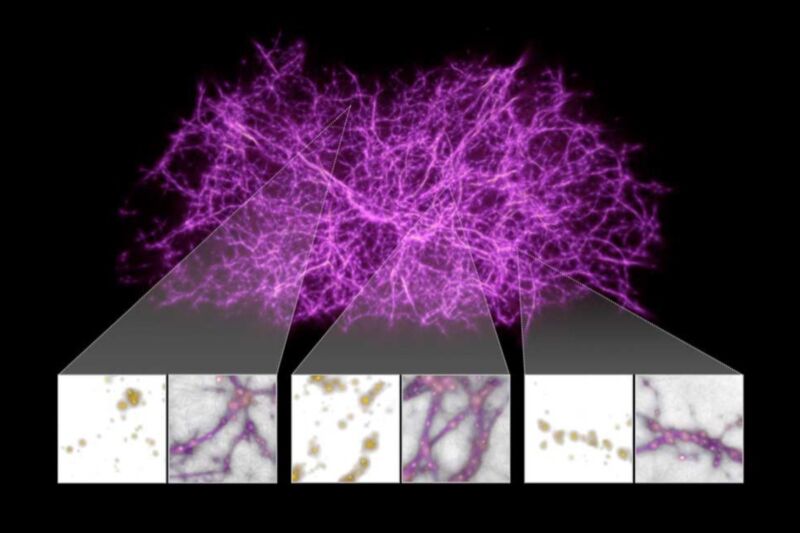
Enlarge / A reconstruction of the cosmic web— a vast network of filamentary structures of matter spanning the universe—modeled on the growth patterns of slime mold. (credit: Joseph N. Burchett et al./AJL)
There's rarely time to write about every cool science-y story that comes our way. So this year, we're once again running a special Twelve Days of Christmas series of posts, highlighting one science story that fell through the cracks in 2020, each day from December 25 through January 5. Today: how physicists used the growth patterns of the humble slime mold to model the dark matter that makes up the filaments of the cosmic web.
The backbone of our cosmos is a vast network of interconnected giant filaments, with huge voids in between. Most of the material that makes up this "cosmic web" is dark matter, along with diffuse and distant gas. Earlier this year, a team of scientists at the University of California, Santa Cruz (UCSC), devised a unique approach to modeling this cosmic web, based on the growth patterns of slime mold, and found some striking similarities. They described their approach in a March paper published in The Astrophysical Journal Letters.
"We don't think the universe was created by a giant slime mold," co-author Joseph Burchett told Ars, dashing our hopes of a novel new creation myth. "This really comes down to the similarities of the products of these two very disparate processes. At the end of the day, the similarities arise in the optimality of nature."
No comments:
Post a Comment